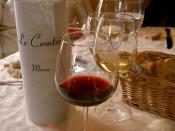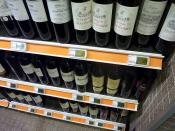Wine tasting is not just like art, it is an art. While wine tasting can be subjective in nature, wine connoisseurs follow some general "guidelines" when judging a wine. It is very easy to learn the techniques of wine tasting, and if you already enjoy wine, leaning the nuances will simultaneously increase the pleasure you derive from tasting.
A wine may be tasted to determine the type of wine, to appraise its quality, to determine its blend, to detect origin, or in comparison with different wines. Different types of wine are not judged by the same standards such as merlot and chardonnay, thus the difficulty lies in appraising each wine within it own category. Senses such as sight, smell, taste, and touch are used to examine the different categories.
Sight is used to reveal the different aspects of a wine's character and quality. Visually observe the wine's viscosity or "legs," which run down the sides of the glass when it is swirled.
The slower moving the legs, the denser the flavor. If a red wine is pale to brickish and has slow moving legs you can expect the wine to be mature. Most wines should be brilliant and clear as opposed to cloudy or hazy, unless the winemaker purposely left the wine unfiltered to create a certain flavor or stylistic difference.
The intensity and shade is referred as the "robe", we say a wine is ruby, garnet or purplish, as red wines age they fade, going from deep purple to eventually, a brick color. Intense color generally signifies good quality whereas browning indicates the wine is oxidized or over it peak. The color intensity of a red wine is an indication of the "body", while wines show it state of oxidation, white wines grow darker.
Savoring the smell of wine...


